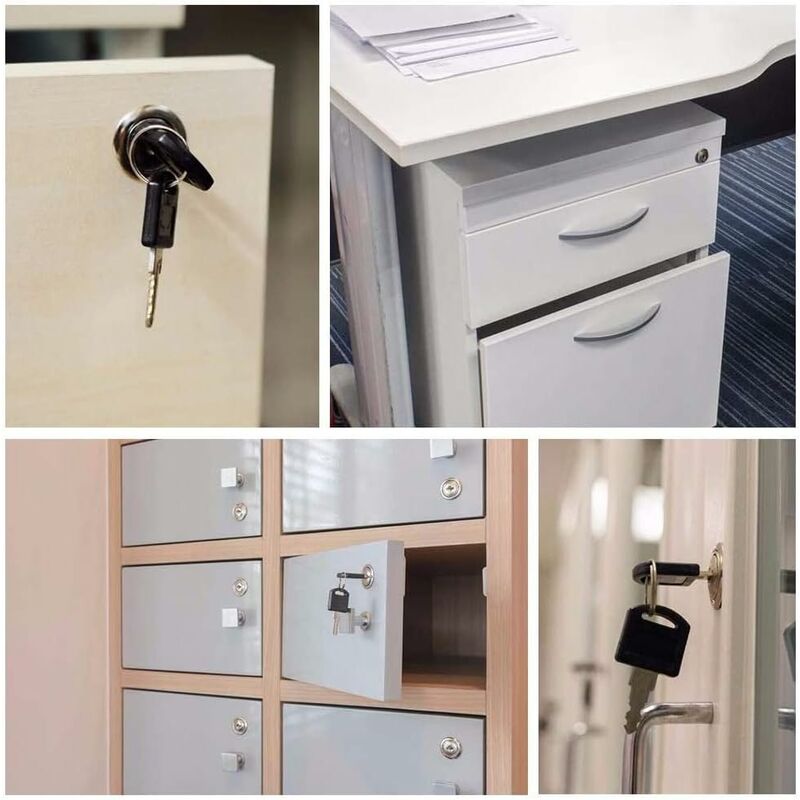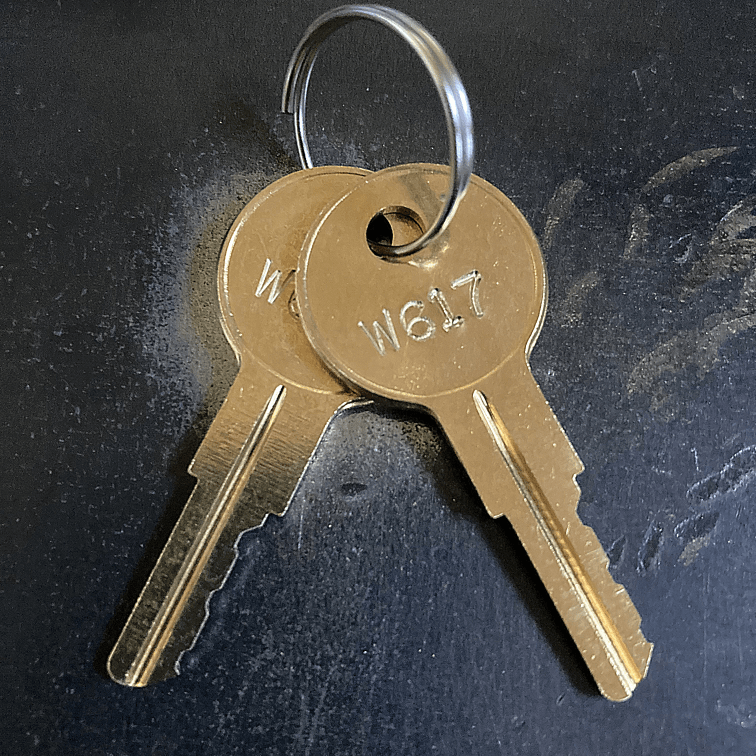Types of Filing Cabinet Keys

Filing cabinets are essential for organizing and storing important documents. Choosing the right type of key for your filing cabinet is crucial to ensure security and ease of access. This guide will discuss the different types of keys commonly used for filing cabinets, their functionalities, and their levels of security.
Standard Keys
Standard keys are the most common type of key used for filing cabinets. These keys are typically made of metal and feature a unique cut pattern that corresponds to the lock mechanism. The standard key is inserted into the lock and turned to unlock the cabinet. The security of standard keys depends on the quality of the lock and the complexity of the key’s cut pattern.
Combination Locks
Combination locks provide a higher level of security compared to standard keys. Instead of a key, these locks use a combination of numbers or letters to unlock the cabinet. Combination locks are generally more secure because they require the user to know the correct combination, which is not easily guessed or duplicated.
Electronic Locks
Electronic locks are the most advanced type of lock for filing cabinets. These locks use electronic mechanisms and require a code, keycard, or biometric authentication to unlock the cabinet. Electronic locks offer the highest level of security, as they are difficult to tamper with and can be programmed to restrict access to authorized users.
Finding a Replacement Key

Finding a replacement key for your filing cabinet can be a frustrating experience, but it doesn’t have to be. By taking a systematic approach, you can increase your chances of finding the right key and getting back to your filing needs.
Identifying the Specific Key
Before embarking on your key search, it’s essential to accurately identify the specific key required for your filing cabinet. This involves carefully examining the lock mechanism and any markings on the key itself.
- Check the Lock Mechanism: Look for any identifying information, such as a brand name, model number, or unique markings. This information can be crucial in pinpointing the correct key. For instance, some locks might have a small, embossed logo or a series of numbers that can be used for identification.
- Identify the Brand and Model: If the lock mechanism itself doesn’t provide clues, try to determine the brand and model of your filing cabinet. This information is usually found on a label or sticker attached to the cabinet. Once you know the brand and model, you can narrow down your search for compatible keys.
- Examine the Key: If you still have the original key, even if it’s broken, inspect it for any markings or unique features. These can help you identify the key’s type, brand, or model. For example, the key might have a specific shape, a number engraved on it, or a unique pattern of grooves.
Finding Replacement Keys Online
The internet offers a wide range of resources for finding replacement keys. Here are some popular platforms and online retailers where you can search for keys:
- Manufacturer Websites: Many filing cabinet manufacturers offer replacement keys for their products. Check the manufacturer’s website for their customer support section or a dedicated key replacement page.
- Online Retailers: Popular online retailers like Amazon, eBay, and Etsy often have a wide selection of replacement keys for various filing cabinet brands. Search for s like “filing cabinet key” along with the brand or model name.
- Specialized Key Retailers: Some online retailers specialize in selling replacement keys for specific types of locks, including filing cabinet locks. These retailers may have a wider selection of keys and offer expert advice on finding the right one.
Ordering from Local Locksmiths, Replacement key for a filing cabinet
Local locksmiths can also be a valuable resource for finding replacement keys. They often have access to a broader range of keys and can help you identify the correct one for your filing cabinet.
- Benefits:
- Expertise: Locksmiths have specialized knowledge and experience in identifying and sourcing keys. They can often determine the correct key even if you don’t have much information.
- Local Availability: You can visit a local locksmith in person and receive immediate assistance. This can be helpful if you need a key urgently.
- On-site Service: Some locksmiths offer on-site service, where they can come to your location and replace the key for you.
- Drawbacks:
- Higher Cost: Local locksmiths may charge a higher price for replacement keys compared to online retailers.
- Limited Selection: Some locksmiths may not have a wide selection of keys, especially for older or less common filing cabinet models.
Filing Cabinet Key Security: Replacement Key For A Filing Cabinet

Filing cabinets are designed to protect sensitive documents and information, but their effectiveness relies heavily on the security of the keys. A lost, stolen, or compromised key can expose confidential data, potentially leading to financial losses, legal issues, and reputational damage. Safeguarding filing cabinet keys is crucial for maintaining the integrity and confidentiality of the information stored within.
Key Security Measures
Implementing effective key security measures is essential for protecting sensitive information stored in filing cabinets. These measures should encompass both physical and procedural aspects, ensuring that unauthorized access to the cabinets is prevented.
- Secure Key Storage: Storing keys in a safe place, such as a locked drawer, safe, or key cabinet, is the most basic security measure. This prevents unauthorized access and protects keys from theft or loss.
- Keychains: Using keychains can help organize and track keys, reducing the risk of misplacing them. Keychains with unique identifiers, such as color-coded tags or engraved numbers, can facilitate easy identification and tracking.
- Access Control Systems: Implementing access control systems, such as electronic locks or key card systems, can significantly enhance security. These systems restrict access to authorized individuals only, providing a higher level of protection compared to traditional keys.
- Key Audits: Regularly auditing the number of keys and their assigned users helps identify any discrepancies or missing keys. This process involves verifying the presence of all keys, confirming their assigned users, and ensuring that all keys are accounted for.
- Key Management Policies: Establishing clear key management policies, including procedures for key issuance, return, and disposal, can help streamline key security practices. These policies should Artikel responsibilities for key management, access control, and reporting any security breaches.
Replacement key for a filing cabinet – A lost filing cabinet key can be a real headache, especially when you’re dealing with important documents. If you’re lucky, your cabinet might be a vintage national bookstore filing cabinet , known for their sturdy construction and enduring design.
In that case, you might be able to find a replacement key from a specialized vintage hardware store or online retailer.
A lost filing cabinet key can be a real headache, but it’s not the only storage dilemma you might face. If you’re a dog owner, you know the struggle of keeping your furry friend’s food fresh and accessible. A dog food storage cabinet can be a lifesaver, offering a secure and convenient solution for storing kibble.
Just like a filing cabinet key, finding the right storage solution can make all the difference in keeping your belongings organized and safe.